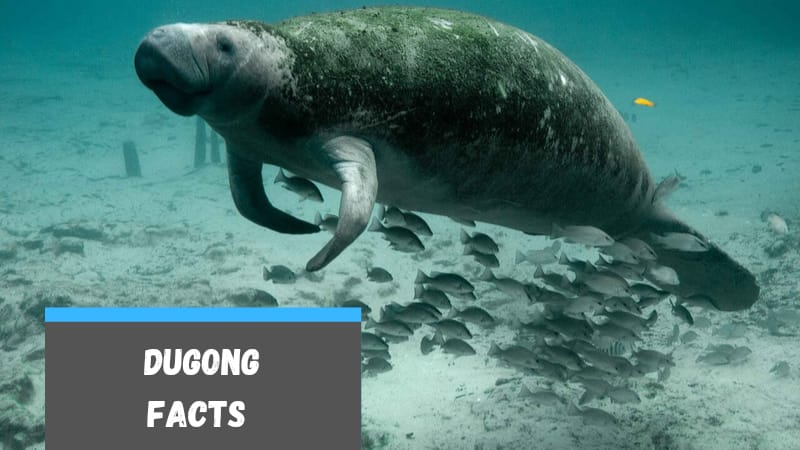
What are Dugongs? Why do people refer to them as sea cows? And why do Dugongs love to spend time in the seagrass beds? Why do Dugongs get the luxury of Legal protection? Here are some interesting 50 Dugong Fun Facts that you need to know!
Dugongs are social creatures; however, typically, you may find them in pairs with their mother and calf. They are, however, recognized for forming large groups of hundreds of animals.
Being semi-nomadic animals, the dugongs could travel long distances searching for specific seagrasses or remain in the same region throughout their lives.
They typically have the option of traveling when their primary source of food, seagrass, is scarce.
When the required seagrass exhausts, they leave in search of new areas to eat. Because they live in turbid waters, they are difficult to spot when they’re not disturbed.
Dugongs are shy in their nature, and when they feel threatened, they flee quickly. If they don’t, they typically look around the vessel or swim away from the vessel without getting closer.
The Dugong is a herbivore and feeds primarily on seagrass. They may also eat jellyfish, sea squirts, and shellfish. Below are 50 dugong fun facts.
50 Dugong Fun Facts
1. The stunning Dugong’s swimming is what brought about stories of mermaids and sirens. But they’re not much like the tales.
2. The population of dugongs has declined significantly because of chemical pollution, human-caused hunting, and the speed of development on the coast.
3. They’re protected from hunting under the law; however, their population is still small because of their slow reproduction rate.
4. Dugongs are large animals.
5. The tails are flat and flippers similar to whales; however, they’re closer to elephants.
6. Dugongs evolved 50-60 million years ago when animals like elephants entered and started living in the waters.
7. They have largemouth, and an upper lip made to be a bristling seagrass.
8. They are herbivores since they eat only seagrass. They can, however, consume up to 88 pounds of seaweed per day.
9. Before swallowing the seagrass, they shake their heads to take all the sand off their food.
10. If they are near shallow water, they “stand” on their tails with its head elevated above the surface of the water.
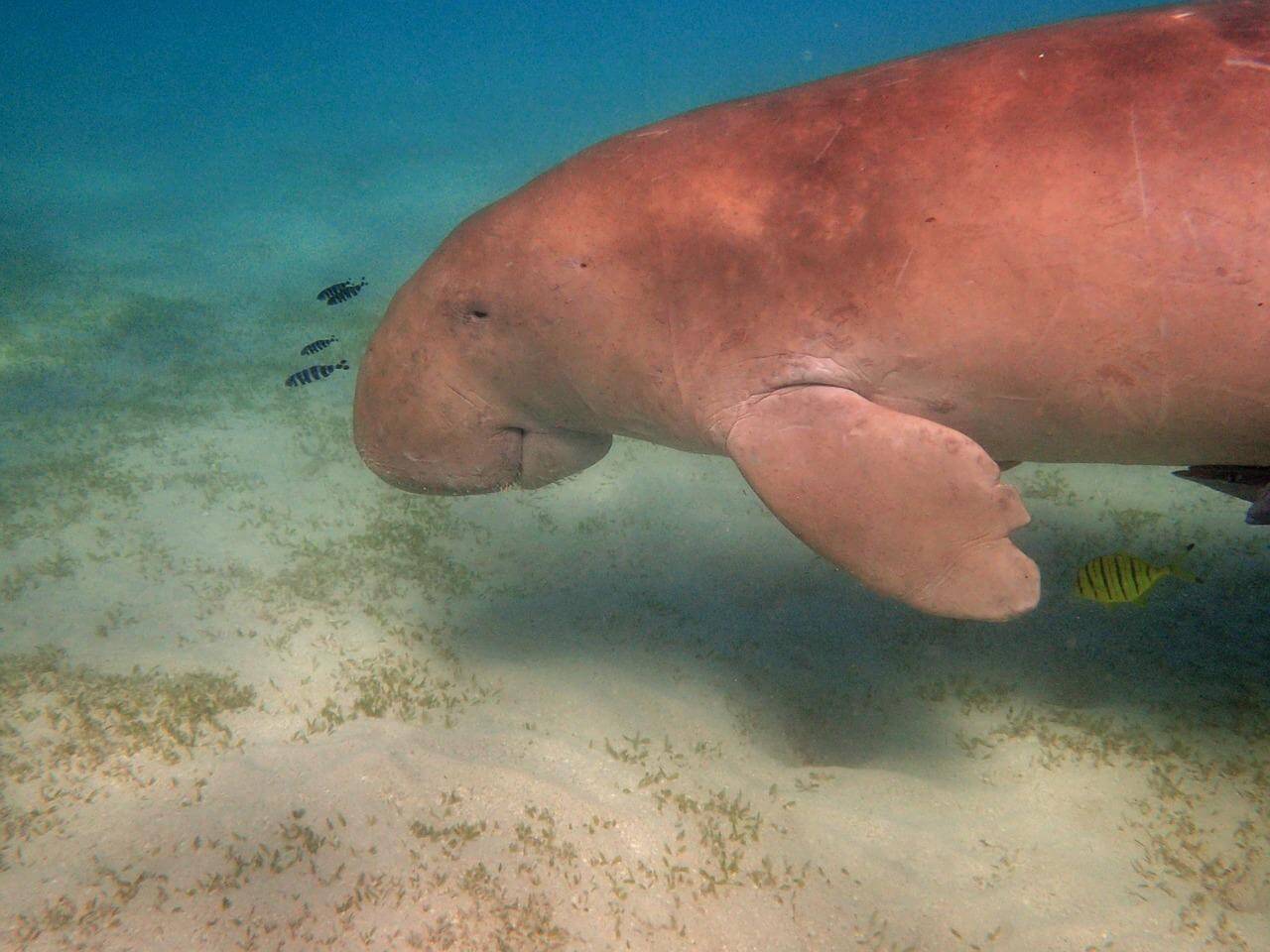
11. They breathe through the lungs. But, they must be able to reach the surface of the water at least every 6 minutes to breathe oxygen.
12. Dugongs can live on their own; however, they also live in larger groups or pairs.
13.They’re not the fastest swimmers compared with different sea mammals.
14. Male dugongs develop tusks around puberty, which occurs between the age of 12 and 15. Female dugongs do not have visible tusks.
15. They have extremely dense and heavy bones. This is why they can submerge underwater. Their lungs are behind their backs, which is why they keep them upright when they swim.
16. Their primary predators include killer whales, sharks, and Crocodiles. However, their most significant threat is human growth.
17. Dugongs are sexually mature between the ages of 9 to 15.
18. Pregnancy can last for about a year and ends with a calf. Female dugongs birth a baby each time between 3 and 7 years old.
19. The bond between the mother and her calf is extremely sturdy. The mother will aid in helping the baby reach the surface of the water to take its first breath.
20. Dugong calves stay with their mothers until it attains 18 months of age.
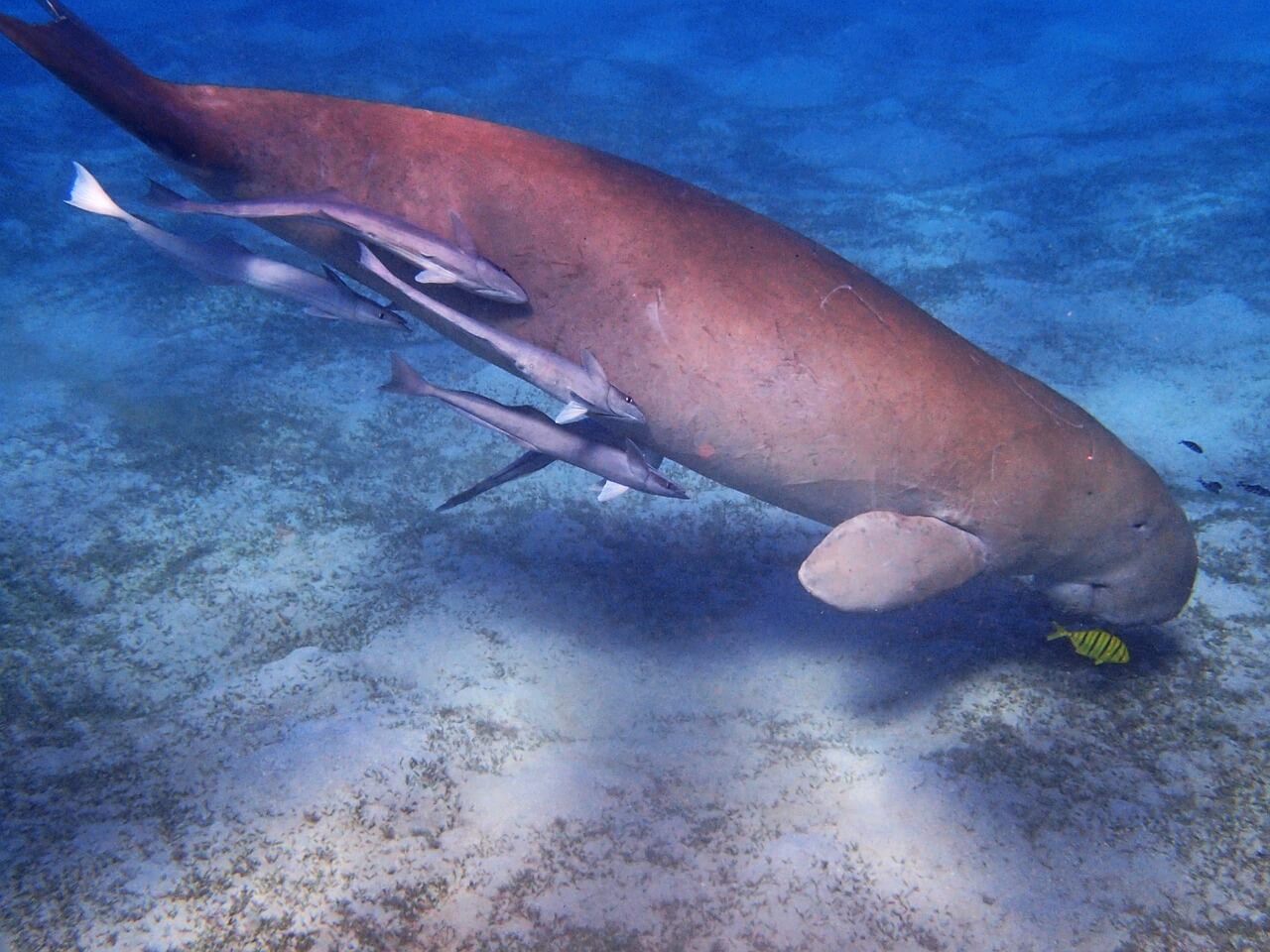
21. Dugongs can live up to seventy years of age if they remain in protected areas with enough food sources.
22. Some dugong pack groups migrate through winter. They may move towards warm bays, canals, or to the Northern regions of their area near the equator.
23. Dugongs are the only sirenian found in its area that spans the waters of more than 40 countries and territories in all of the Indo-West Pacific.
24. People also know them as sirenians due to their mammary glands and nursing practices being like those of humans.
25. The upper lip of these mammals is flexible, allowing them to grab whole plants. After eating, they leave “feeding trails,” which are furrows made in the ocean.
26. The moment after birth, female dugongs drag their young offspring onto the water to breathe.
27. Dugongs love eating seagrass, and they consume about 50 kilograms of seagrass per day.
28. Dugong utilizes their flippers to traverse the seabed while feeding and rooting the entire seagrass plant with no effort.
29. The look of Dugong is as fascinating as its name.
30. The water mammals are pear-shaped and typically have a brown color.
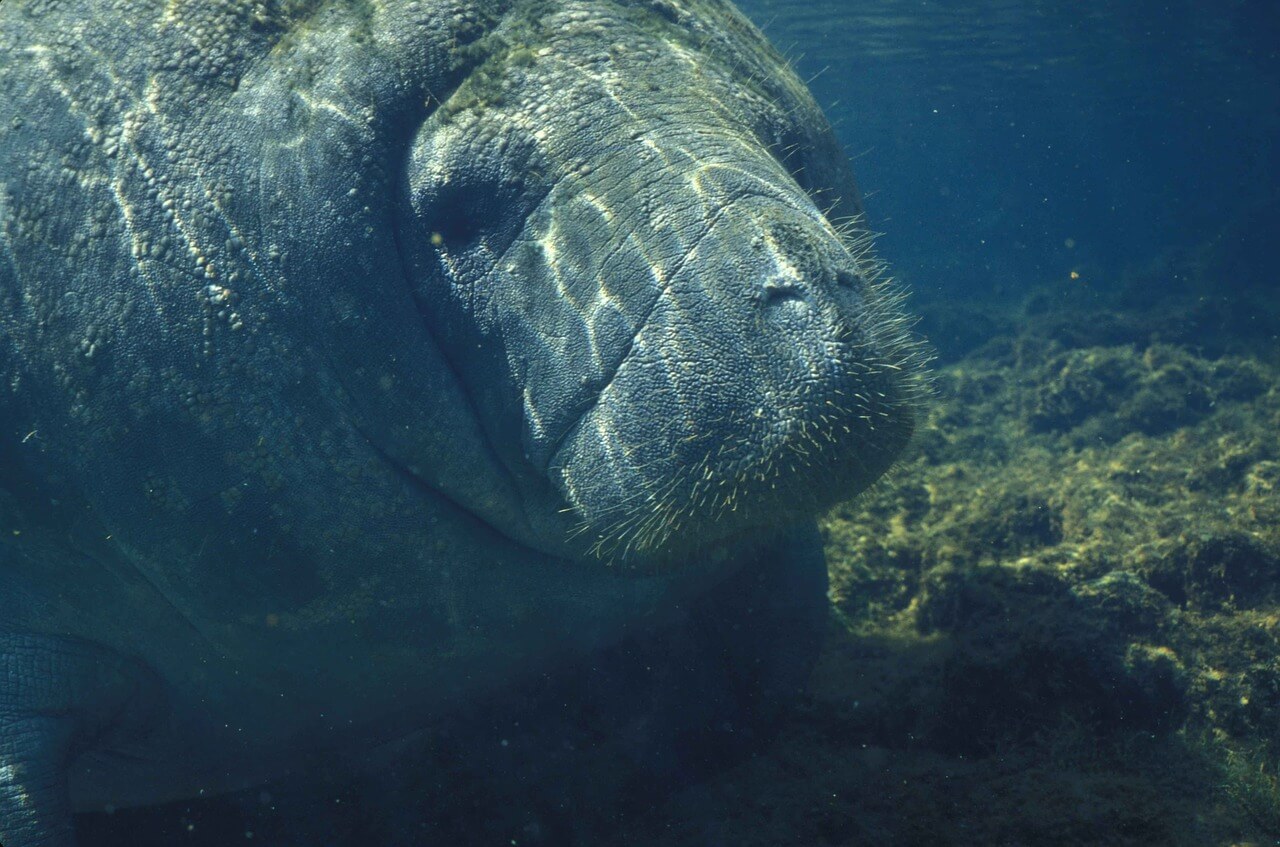
31. Their flattened tail could cause you to think they’re close cousins of dolphins.
32. They also feature paddle-like flippers and an unusual head shape.
33. Dugongs don’t have fins, which separate them from their water friends.
34. Dugongs like to stay in shallow warm water.
35. There are around 80,000 dugongs in Australian waters.
36. Shark Bay Marine Park has the biggest population of dugongs on the planet, with over 10,000 living in the Bay.
37. This aquatic creature is under threat of death today, Dugongs are also protected species.
38. Dugongs do not travel alone. You may find Dugongs move in herds.
39. As they gracefully and slowly move through the water, they leave behind a sand cloud.
40. They can stretch up to 11 feet and weigh as much as 2000 pounds.
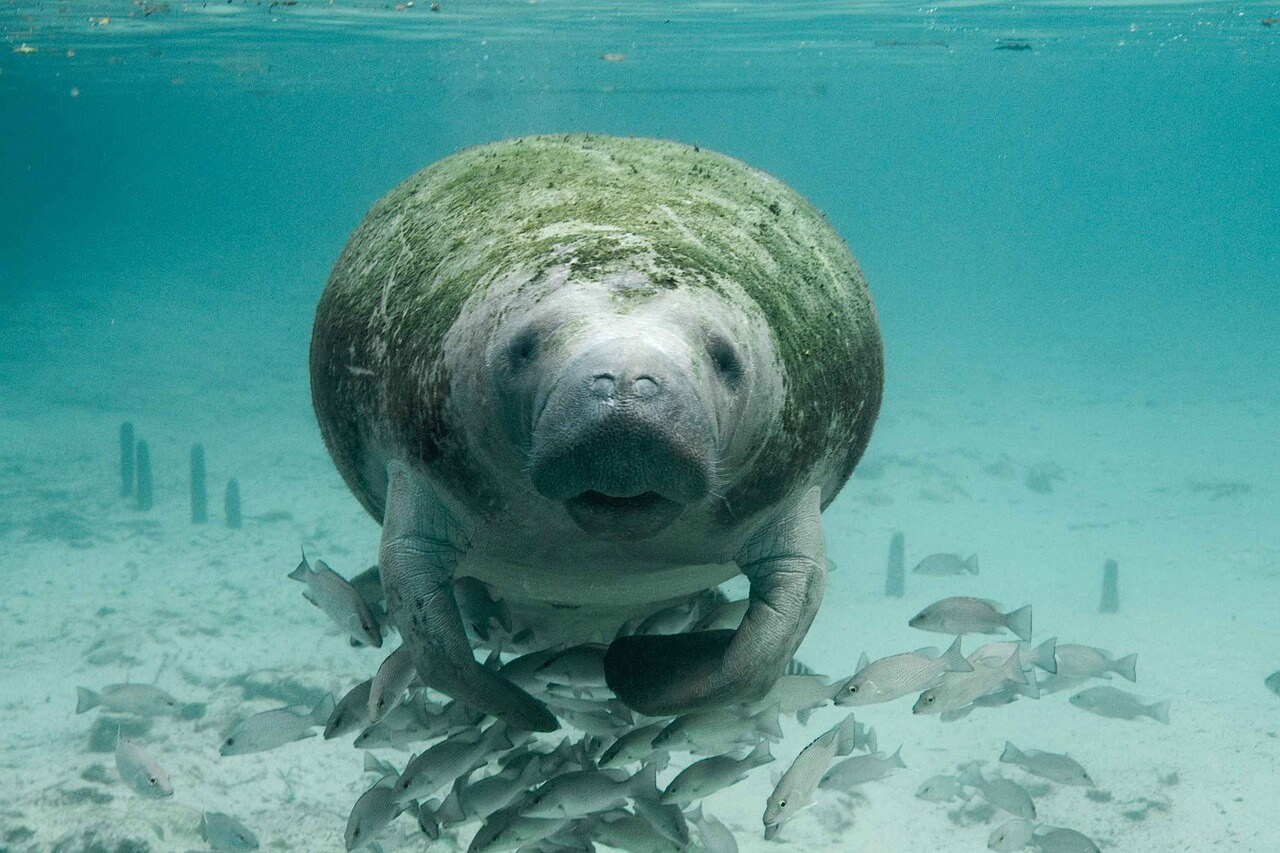
41. When they’re together, they utilize different noises to express their messages.
42. Their sounds can range from chirps to barks to trills.
43. Male dugongs are famous for their ability to establish and protect their territories for courtship.
44. They typically swim at 6 miles an hour, but they can swim at a speed of up to 14 miles an hour.
45. Dugongs are part of the Kingdom Animalia.
46. Dugongs are part of the Chordata phylum.
47. Dugongs are part of the class Mammalia.
48. Dugongs are part of the family Dugongidae.
49. The type of their skin is “Leathery.”
50. Dugongs have a close relationship with the Manatee.
Conclusion
Hunting for oil and meat is a major threat to this species’ population. Many dugongs are accidentally caught in nets that capture fish and sharks. Insufficient oxygen supply leads to high mortality from this by-catch.
Ships, boats, or other vessels throughout their range may harm these animals. Habitat disturbance, also known as water pollution, is another threat to these animals.
This causes the destruction of their main food source: the seagrass beds. The low birth rate limits their population. On the other hand, we cannot keep these protected species in captivity.
We hope you enjoyed our article about 50 dugong fun facts. For more informative articles, stay tuned!
